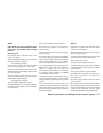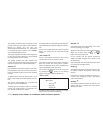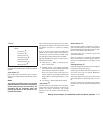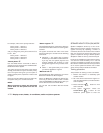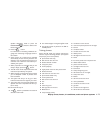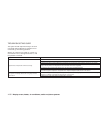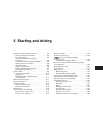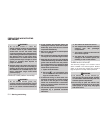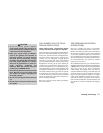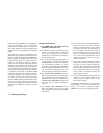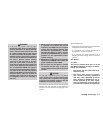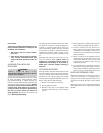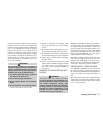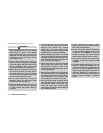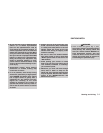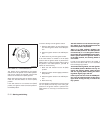
CAUTION
● Do not use leaded gasoline. Deposits
from leaded gasoline will seriously re-
duce the three-way catalyst’s ability to
help reduce exhaust pollutants.
● Keep your engine tuned up. Malfunc-
tions in the ignition, fuel injection, or
electrical systems can cause overrich
fuel flow into the three-way catalyst,
causing itto overheat.Do not keepdriv-
ing if the engine misfires, or if notice-
able loss of performance or other un-
usual operating conditions are
detected. Have the vehicle inspected
promptly by a NISSAN dealer.
● Avoiddriving with anextremely lowfuel
level. Running out of fuel could cause
the engine to misfire, damaging the
three-way catalyst.
● Donot race the enginewhile warming it
up.
● Do not push or tow your vehicle to start
the engine.
ON-PAVEMENT AND OFF-ROAD
DRIVING PRECAUTIONS
Utility vehicles have a significantly higher
rollover rate than other types of vehicles.
They havehigher ground clearance thanpassen-
ger carsto make them capableof performing ina
variety ofon-pavement andoff-road applications.
This gives them a higher center of gravity than
ordinary cars. An advantage of higher ground
clearance is a better view of the road, allowing
youtoanticipateproblems.However,they arenot
designed for cornering at the same speeds as
conventional two-wheel drive vehicles any more
than low-slung sports cars are designed to per-
form satisfactorily under off-road conditions. If at
all possible, avoid sharpturns at high speeds. As
with other vehicles of this type, failure to operate
this vehicle correctly may result in loss of control
or vehiclerollover. Ina rollovercrash, anunbelted
person is significantly more likely to die than a
person wearing a seat belt.
Be sure to read the driving safety precautions
later in this section.
TIRE PRESSURE MONITORING
SYSTEM (TPMS)
Each tire, including the spare (if provided),
should be checked monthly when cold and in-
flated to the inflation pressure recommended by
the vehicle manufacturer on the vehicle placard
or tire inflation pressure label. (If your vehicle has
tires of a different size than the size indicated on
the vehicleplacard or tire inflationpressure label,
you should determine the proper tire inflation
pressure for those tires.)
Asanadded safetyfeature,your vehiclehasbeen
equippedwithaTirePressureMonitoringSystem
(TPMS)thatilluminates alowtirepressure telltale
when one or more of your tires is significantly
under-inflated. Accordingly, when the low tire
pressure telltale illuminates, you should stop and
check all 4 tires as soon as possible, and inflate
them to the proper pressure. Driving on a signifi-
cantly under-inflated tire causes the tire to over-
heat and can lead to tire failure. Under-inflation
alsoreduces fuelefficiencyand tiretreadlife, and
may affect the vehicle’s handling and stopping
ability.
Starting and driving 5-3



